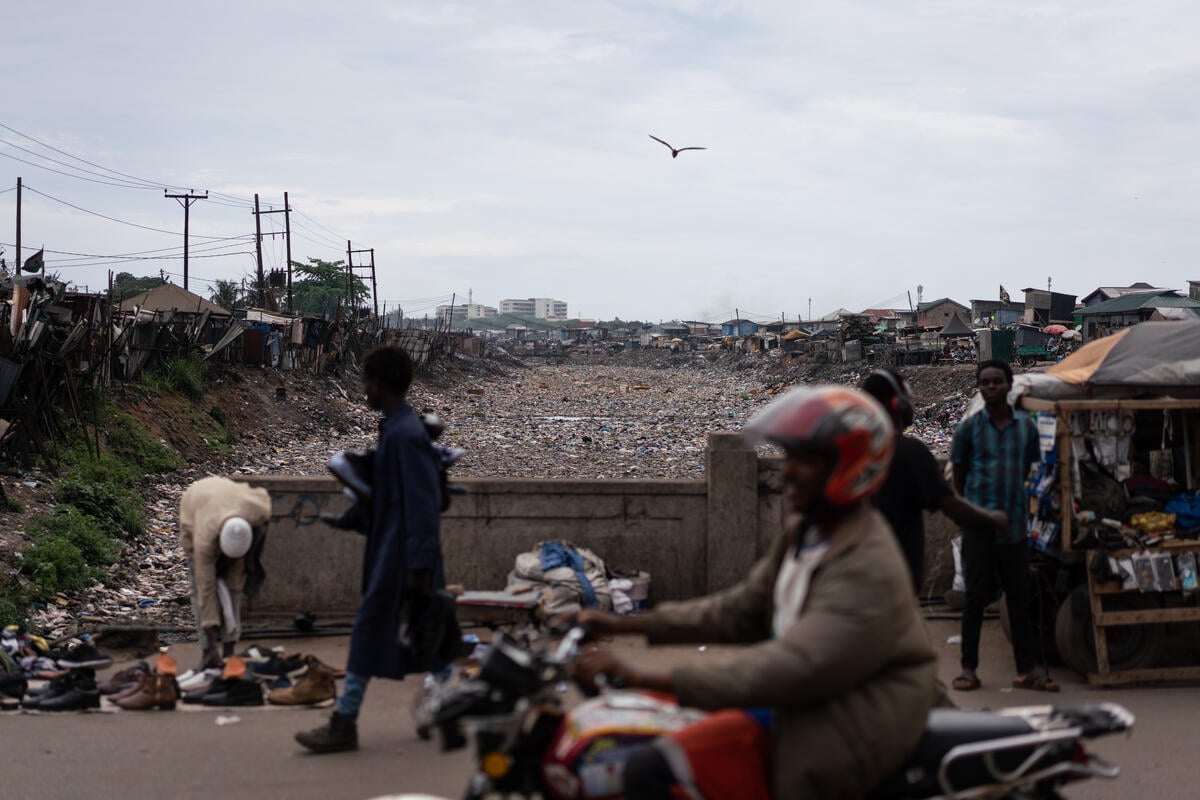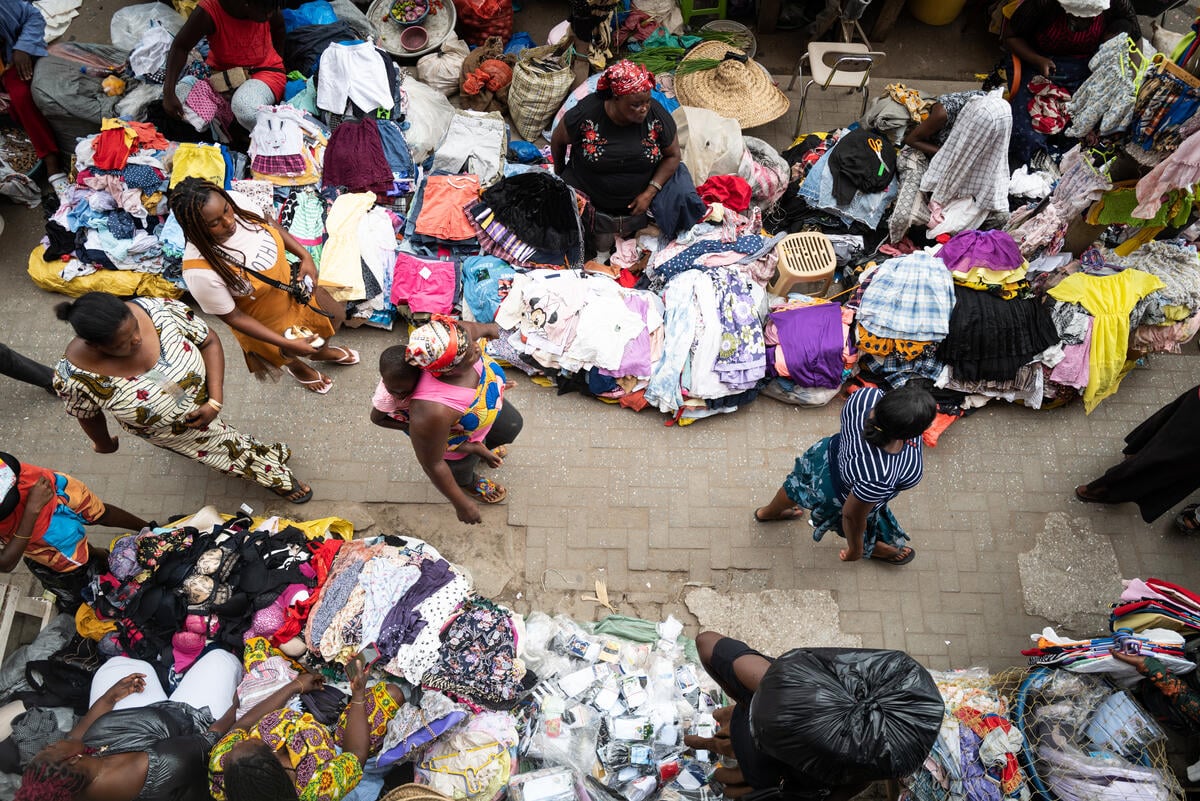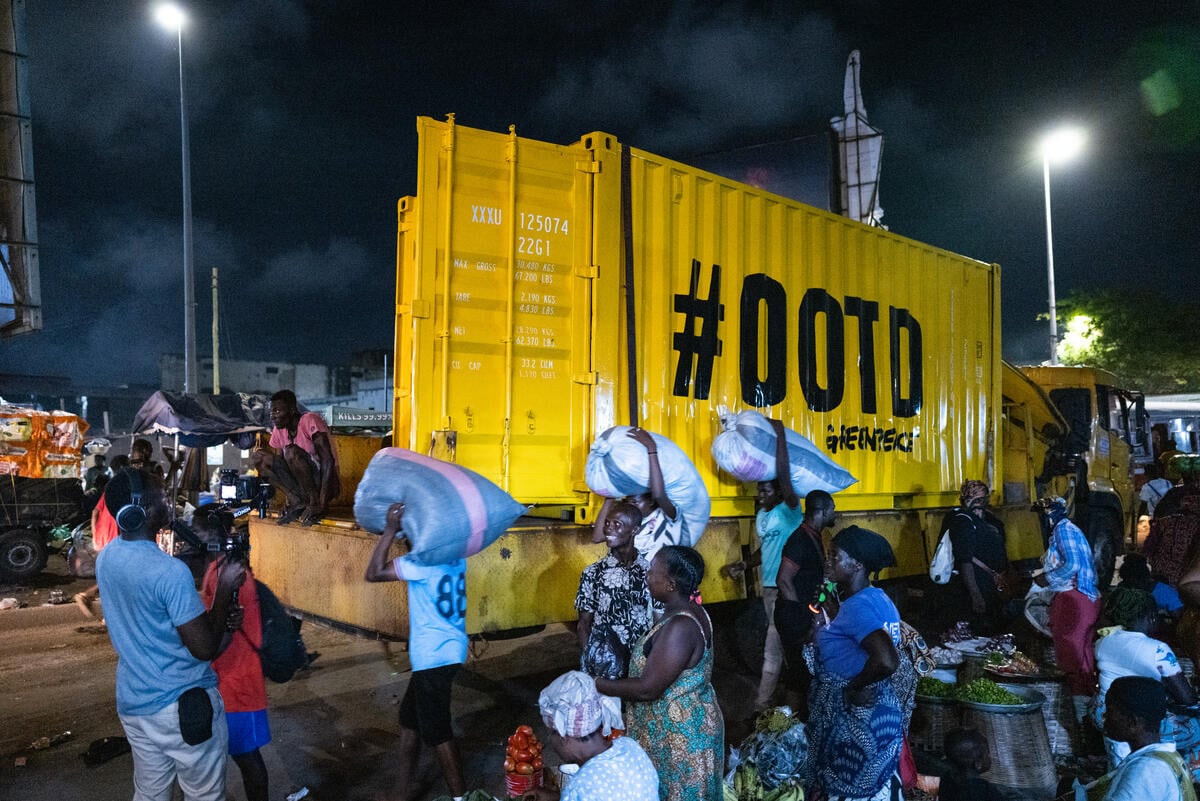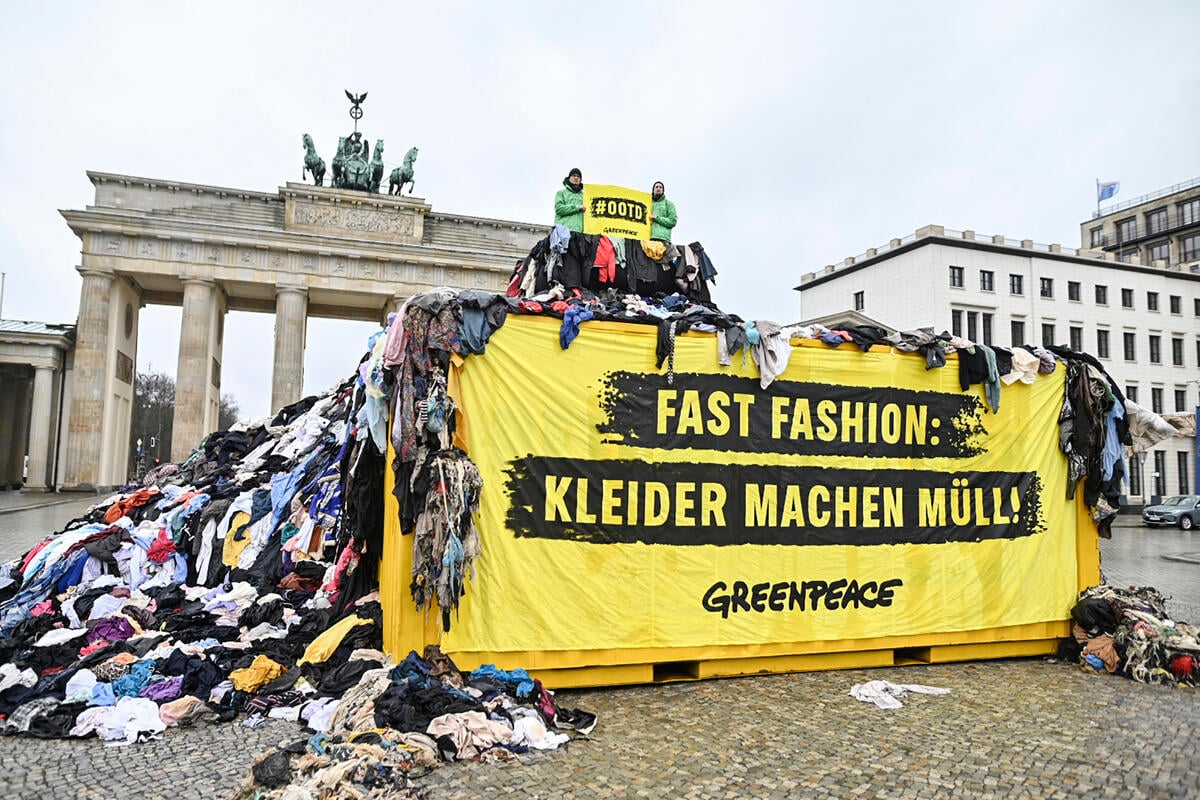For several years now, my country Ghana has been dealing with a silent plague: second-hand clothes. Behind its booming cocoa industry, vibrant culture and delicious food, this plague is choking our water bodies and toxifying our land. Why do I call them a plague? Because of the huge volumes of Western exports of discarded fast fashion.
Ghana was once declared home to the world's largest electronic waste dump, due to the tonnes of e-waste being dumped into the country. But many are not aware of the further burdens that wealthy countries, especially in Europe and North America, continue to place on us.
For those reading this and living in the West, have you ever considered what actually happens to your clothing when you donate them? And do you assume donations end up in your home town or city? Well to answer that question - a lot of it comes to cities in Africa like Accra, flooding our flea markets before choking our rivers and lagoons, polluting our beaches and destroying marine life in our ocean - places they really shouldn't be.
Return to sender: Africa doesn't need more of your clothes!
A silent plague is suffocating Ghana - second-hand clothes flooding markets, choking rivers, and harming marine life.
Time to rethink our clothing donations and challenge the toxic trading system. pic.twitter.com/y7Of8Z4d8g
— Greenpeace Africa (@Greenpeaceafric) February 12, 2024
Second-hand clothes have long been important to Ghana's local economy. Kantamanto market in Accra, established in the 1970s, is one of the largest second-hand markets in the world, with over 30,000 workers who sell, clean, repair and upcycle the Global North's textile waste. But the growth of fast fashion since the 2000's has led to increasing quantities of poorer quality clothing, and overproduced fast fashion arriving in overwhelming volumes. Ghana now receives an annual total of about 152,600 tonnes of second-hand clothes, known as Oburoni Wawu, literally translated as "dead white man's clothes". Every week, around 100 forty foot long containers, filled with over 15 million fashion items, arrive in the port of Tema, Ghana's largest port, east of Accra. About 70% of these clothes are sent to Kantamanto market.
In October 2023, Greenpeace Africa and I joined forces with our colleagues at Greenpeace Germany on a research trip to document the situation in Ghana. Our aim was simple - to find out from local communities how this impacts their lives, how they feel about the vast quantities of used clothes being imported and to intervene by bringing just a small proportion of these clothes back to Europe - where they belong.
Our journey began in Old Fadama, Accra's biggest informal settlement in Accra with over 80,000 inhabitants and home to a large and growing dumpsite. The mountains of clothes were huge. The smell was potent. And climbing to the top of them felt like standing on the monuments of our overconsumption - a harsh reminder of the fashion industry's contribution to climate colonialism.

Back at Kantamanto market, we asked local traders to collect all the second-hand clothes, locally called "borla", that couldn't be sold - because they were of poor quality, not suitable for the climate (especially those made with plastic), the sizes aren't appropriate for the local market, or simply because people in Ghana don't wear those styles - and arranged for them to be transported to our shipping container.
This was no easy task and going up and down the narrow sidewalks of this bustling market was eye-opening. Because we didn't want the clothes to go mouldy on the journey, we avoided all those that had been thrown on the ground and used to mop up dirt and water. In just one week, we collected enough clothes to fill our 20-foot shipping container.

We spoke to the market women and men who pay the equivalent of USD 280 for a bag of these imported second-hand clothes and witnessed the disappointment on their faces when they showed us that only half of those clothes were usable. Yet again a stark reminder of the deception surrounding this flawed, audacious and toxic trading system.
Once we built trust with local workers at Kantamanto market and they understood the purpose of our mission, there was a huge sense of solidarity and belief in the work we set out to do. They helped us raise awareness across the market to collect the "borla" and put them into the container. It was a laborious but beautiful team effort, full of camaraderie. Some told me they felt empowered and hoped this would encourage Western countries to respect our standards and environment.

A new wave of fashion repatriation
This part of the trip was monumental because used clothes sent to Ghana don't usually make the return trip. Eyebrows were raised by local officials, and navigating the complicated customs procedures to get our container out of Ghana and onto a ship headed for Europe took a long time. We had similar issues once it arrived in Germany - ironic considering how easily used clothes move towards Global South countries. Finally, in early January we could start our investigation of the clothes - assessing the types of garments, the materials they are composed of, the brands that made them, and what makes them unwearable.
We counted around 19,000 items of clothing, weighing 4.6 tons. We were shocked to find through our infrared analysis that the majority of the garments are made with synthetic fibres - massively increasing plastic waste in countries in the Global South like Ghana
Then - to coincide with Berlin fashion week - activists from Greenpeace Germany placed the container at the Brandenburg Gate, creating a 3.5 metre high and 12 metre wide mountain of textile waste. The demand - for the fashion industry and governments who should be regulating this mess to finally take responsibility for the dangerous problem that they have created.

Africa is not your dumpster
The burden of pollution from the West's obsession with fast fashion should not be falling on the people of Ghana or any other Global South country.[1] This second-hand and toxic waste is being sent without consideration for what people in Ghana really need or want, and to a place without the appropriate local infrastructure to cope with "your problem" - imposing waste colonialism and creating the conditions for yet more neocolonialism from the Global North.
The impacts of fast fashion on Ghana are just one aspect. Big brands are also squandering the efforts and the resources used to make fast fashion, with most of the pollution, greenhouse gas emissions and exploitation in supply chains taking place in other countries in the Global South.[2] We need regulation to outlaw this destructive fast fashion business model. Greenpeace is calling on governments, the EU and the UN/UNEA to advocate for effective Extended Producer Responsibility to make companies take responsibility for their products and ensure that "polluters pay" for this damage.[3] And we can all fight back against the normalisation of fast fashion by repairing, reusing, sharing, re-creating and choosing better quality clothes. Above all, stop buying fast fashion made with plastic, and challenge greenwashing generated by big brands.
It's time to bring an end to this daily disaster happening right before our eyes in Ghana - where the clothes have overflowed from the informal waste dumps and streets, onto our beaches and into the ocean. It's time to shake things up, to promote and embrace local fashion and designers as an alternative, redefine collective action and call out this waste colonialism that fails to value and respect the lives of Africans and our environment.
Notes:
[1] In March 2022, Greenpeace Germany went to Kenya and Tanzania to witness the problem of imported textile waste in these countries. See Poisoned Gifts (2022). https://www.greenpeace.org/international/publication/53355/poisoned-gifts-report-fast-fashion-textile-waste-disguised-as-second-hand-clothes-exported-to-east-africa/
[2]. For supply chain impacts from hazardous chemicals, greenhouse gas emissions, synthetic (plastic) fibres, which mostly take place in East Asia, SEAsia, Asia and Turkey, see Self Regulation: a Fashion Fairytale (2021), which reports positive progress on eliminating hazardous chemicals in supply chains as a result of Greenpeace's Detox My Fashion campaign, showing that concerted action and transparency in supply chains is the key to industry transformation, but this success is limited to these brands which are taking action.
[3] An effective law must include:
Introduction of the "polluter pays principle" - companies worldwide must take responsibility for their products throughout their entire life cycle, pay for waste and damage and avoid this in the future.
Clothing without synthetic fibres made from plastic, i.e. from oil and gas
Ban on the export of textile waste and unusable clothing
Ban on chemicals that are harmful to the environment and health in production
Prohibition of destruction of usable products
Requirements for the durability, repair, reuse and recyclability of textiles, the information must be contained in a digital product passport in clothing.
This article was originally published by Greenpeace Africa on 9 February 2024.
Samuel Quashie-Idun is Head of News Investigations at Greenpeace Africa.







